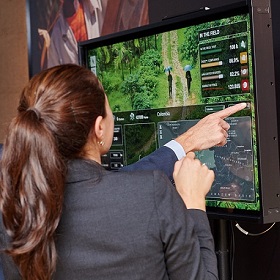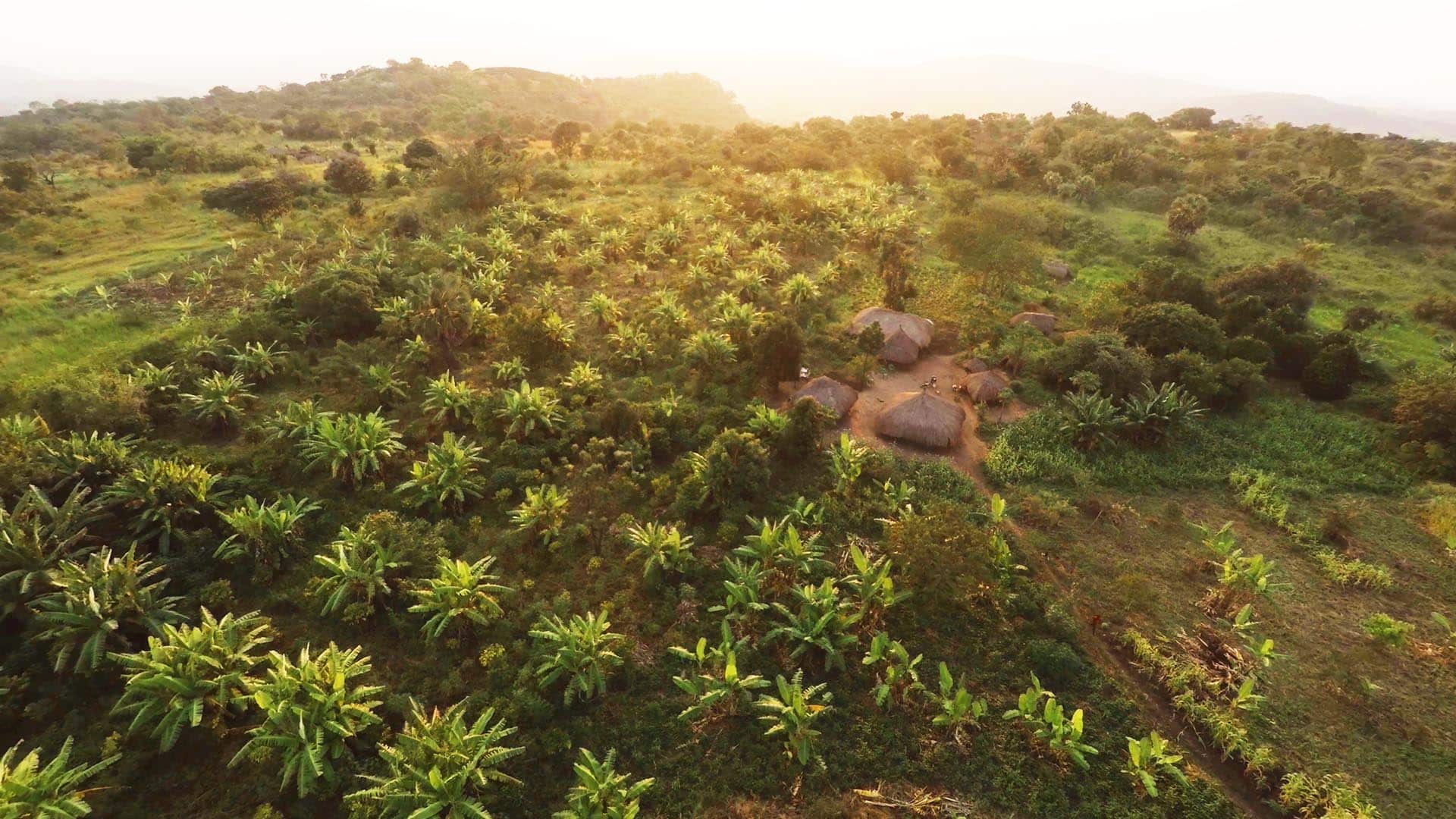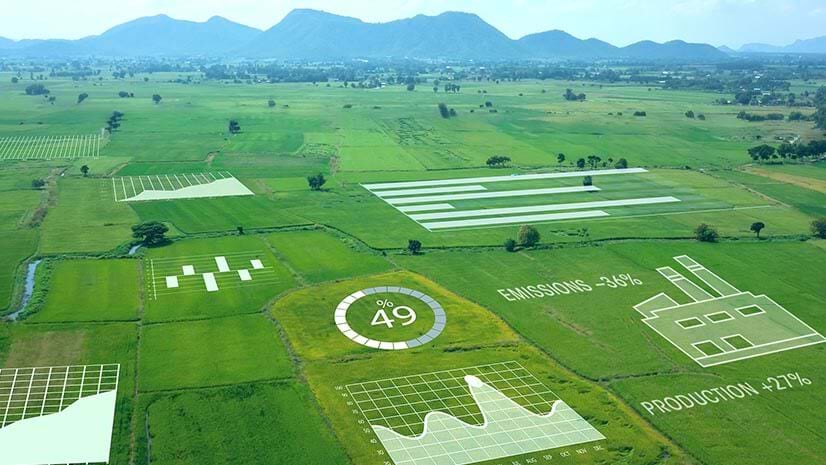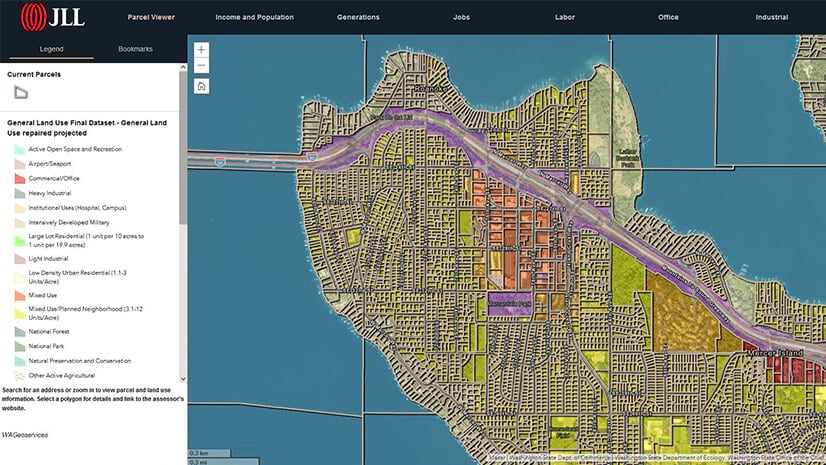In quick succession in October 2018, the Nobel Prize in economics was co-awarded to a Yale professor who pegged the cost of poor environmental practices to economic health, and a United Nations (UN) panel of scientists revealed that the world has less than a decade to take action against devastating climate change.
Sustainability is once again front-page news.
And while governments struggle toward collaborative solutions, businesses are driving corporate sustainability efforts backed by big data analytics and location intelligence.
The UN’s Sustainable Development Goals
On September 25, 2015, heads of state gathered at the United Nations headquarters in New York City. At that summit, 193 countries signed on to a new set of global sustainability targets. The UN’s Sustainable Development Goals (SDGs) use simple language to lay out an international regulatory framework for radical changes to be made in the world by the year 2030.
The SDGs are known as a government initiative, but companies worldwide consulted on their development, and they will have a potentially enormous impact on the business world. In part, that’s because their successful implementation will require investment and support from the private sector. A report by the UN’s Sustainable Development Solutions Network estimates the cost of SDGs at US$1.4 trillion per year until 2030. The same report notes that approximately half of the investments can be privately financed.
The sustainability effort is of particular interest to companies that convert natural resources into products—among them energy providers, car manufacturers, and food purveyors. For those businesses, investment in the SDGs can be critical to conserving the raw materials of production for decades to come—and locking in long-term competitive advantage.
Across the business world, executives can see the implication: sustainability could soon become a major business opportunity.
The Role of the Private Sector
Just one day after the September 2015 summit, then-UN secretary-general Ban Ki-moon held the United Nations Private Sector Forum to discuss the role of businesses in achieving the Sustainable Development Goals. More than 200 executives from organizations around the world joined him in New York, including leaders from Dell, Deloitte, Facebook, Fidelity, PepsiCo, and Siemens AG.
The secretary-general told business leaders, “I am counting on the private sector to drive success. Now is the time to mobilize the global business community as never before. . . Trillions of dollars in public and private funds are to be redirected towards the SDGs, creating huge opportunities for responsible companies to deliver solutions.”
Corporate organizations seem to agree. In a 2017 McKinsey survey, nearly 60 percent of organizations said they are more engaged with sustainability than they were two years prior, with engagement levels rising to 80 percent in certain industries like packaged goods and infrastructure.
Indeed, as climate change continues, companies that rely on natural resources are taking a hard look at the long-term viability of their products. In some regions of the world, for example, water supplies might soon run out. Reliable cropland could turn fallow as temperatures and weather systems shift. And yet, just 21 percent of business executives told McKinsey that business growth was a top driver of their sustainability initiatives. One way to read that finding: a select few industry leaders have figured out that smart, sustainable practices sow the seeds of long-term growth and competitive advantage.
Innovative companies are adopting tools such as artificial intelligence, IoT, and analytics to address these challenges in ways that also benefit the business—doing well by doing good. In fact, according to the McKinsey report, nearly half of the organizations using technology to advance sustainability are employing big data and advanced analytics, which typically includes location intelligence.
Where Sustainability Meets Opportunity
One such company is Nespresso. An autonomously managed subsidiary of Nestlé Group, Nespresso is known globally for its premium single-serving coffees. Key to Nespresso’s success and customer loyalty is the company’s emphasis on—and investment in—the consistency of its coffee’s flavor.
However, coffee is a delicate crop, frequently grown in developing countries and highly dependent on healthy ecosystems. This leaves coffee—and Nespresso—susceptible to the increasingly volatile effects of sociocultural events and climate change. For Nespresso, acting today to avoid the perils of tomorrow is not just good citizenship; it’s sustainable business.
“Sustainability is really at the core of our business. It is an imperative to our long-term business success,” explains Yann De Pietro, operations and sustainability technology manager for coffee at Nespresso. “There have been studies saying that by 2050, Arabica coffee may not be available anymore in some countries if we don’t do anything now.”
The company is working to combat that decline so that the seeds of Nespresso’s competitive advantage remain fertile long into the future.

Leading companies are discovering compelling links between corporate citizenship and profitable business.
Controlling Challenges through Sustainability
Nespresso has made a deliberate choice to integrate these challenges into its decision-making process and act on them through sustainability programs. These programs help convert liabilities into business opportunities while supporting the farmers and communities that grow coffee.
Nespresso works with over 100,000 farmers in 13 countries, up from 300 farmers 15 years ago. (See the sidebar for more.) In 2003, the company launched its responsible coffee sourcing program, the Nespresso AAA Sustainability Quality Program, in partnership with the Rainforest Alliance. The program is designed on two convictions: that high-quality coffee and the sustainability of farming communities are interconnected, and that only by building trusting, long-standing relationships with coffee producers can Nespresso hope to make a positive difference.
The company supports the implementation of sustainable agricultural practices at farms by investing in technical assistance, paying premiums directly to coffee farmers, and co-financing infrastructure improvements.
As part of that effort, the company has invested in a network of over 450 agronomists—specialists who provide coffee growers with on-site technical assistance and trainings on practices such as pruning, crop renovation, fair treatment of workers, water usage, and biodiversity conservation, all of which can earn farmers industry certifications.
Through the AAA program, Nespresso invests approximately US$35 million per year in technical assistance and premiums paid to farmers for their quality coffee. The educational program is free to farmers and doesn’t require them to sell to Nespresso, De Pietro explains. But the benefits to each side help create long-lasting relationships and loyalty.
Nespresso has a publicly stated goal of sourcing 100 percent of its “permanent range” coffee—the brand’s most prominent line of coffee capsules—from AAA farmers by the year 2020. In 2017, the company bought approximately 90 percent of its beans from those farmers.
The AAA Sustainability Quality Program falls under Nespresso’s broader strategic framework, The Positive Cup, which focuses on four areas: coffee, aluminum, climate change and engagement. In addition to its goal of sourcing all coffee from AAA growers by 2020, Nespresso has committed to other milestones that include sourcing 100 percent of its aluminum from responsible, ASI-certified sources, offering consumers convenient solutions for recycling, reducing the carbon footprint of each cup, and reaching carbon neutrality for its operations.
In 2016, the company tied those efforts to the UN’s Sustainable Development Goals, committing to making an impact on 11 of the 17 SDGs. In addition to Climate Change and Water Stewardship (which contribute to SDGs 13 and 6, respectively), Nespresso called out Responsible Consumption and Production (supporting SDG 12) and Decent Work and Growth (for SDG 8) as foundational to consumer goods organizations such as itself.

Today Nespresso is using GIS and location intelligence to build a comprehensive view of farming operations and accessibility across regions. “We have started to have a global vision of accessibility of the farms,” De Pietro says.
Progress through Digital Transformation
While its sustainability program has been in effect for years, Nespresso has seen recent rapid results due to advances in digital technology.
“Digital transformation is a key change for sustainability” at Nespresso, De Pietro says. “[We] want to provide maximum impact. So we need the tools to help us to maximize our efforts.”
On the balance sheet, the results look promising. When Nestlé announced its 2017 results, it singled out Nespresso’s mid single-digit growth worldwide and mid-teens growth in North America. The parent company’s growth was led by coffee, pet care, and health-science products.
At the center of Nespresso’s digital transformation is location intelligence. The company has built a robust monitoring and evaluation system using advanced digital technology that records, maps, and shares data about farms, farmers, and coffee crops. This reveals local feedback and insight on AAA’s impact, as well as the status of each farm, including its objectives, achievements, and performance. The digital platform—which is powered by a geographic information system (GIS) and data analytics—also reveals insights into the way farmers deliver coffee beans to central mills to be harvested, a key factor in supply chain productivity and efficiency.
Bringing Intelligence to Location Data
One of De Pietro’s goals is to help farmers get their crop to market more efficiently. A recent analysis in Colombia exemplifies how location intelligence can create business advantage for the company and its partners.
A location analysis revealed that farmers brought their crops to certain Colombian mills—many of them close to their farms—less frequently than projected. De Pietro queried the GIS technology to dig deeper into the data so that he could understand these behavioral patterns. What he discovered was a reminder of topography’s effect on time to market.
With basic maps, he says, the team could work out the distance between farmers and mills. But only with sophisticated location intelligence could they understand the true travel distances to each central mill. Applying a similar analysis to the agronomists who visit Nespresso’s AAA farms, De Pietro and the team found a similar pattern. The analysis uncovered areas where the terrain required long rides or walks through the mountains to reach certain farms, making frequent visits impractical. For a company that works with 100,000 farmers, having a digital engine to deliver that kind of intelligence is crucial.
In both cases, location intelligence pointed the way to better business and sustainability practices. If the mills were more centrally located, farmers could get coffee to market more quickly. And when the agronomists can reach the farms faster, they can hasten the day when 100 percent of Nespresso’s coffee is sourced from sustainable farmers.
Just as retailers and logistics companies use location intelligence technology to plot out the most efficient drive times for customers or delivery personnel, Nespresso embraces the realization that the distance to a location is less important than the amount of time it takes a customer or farmer to get there.
Today Nespresso is using GIS and location intelligence to build a comprehensive view of farming operations and accessibility across regions. “We have started to have a global vision of accessibility of the farms,” De Pietro says.
As Nespresso makes progress in Colombia and around the world, the organization maps its efforts back to the UN’s Sustainable Development Goals as a way to organize and guide strategic decision-making. The AAA program, for instance, directly impacts SDG 8 (through inclusive growth), SDG 2 (by promoting sustainable agriculture), SDG 4 (through learning opportunities for all), SDG 1 (through efforts to eradicate poverty), and SDG 6 (by way of water stewardship).
The Future of Sustainability
The use of location intelligence to shed light on the granular details of day-to-day coffee farming sets Nespresso apart. By examining and adjusting locations for farmers, the company frees up precious time and increases productivity. This impacts not only farming, but also time for education and strategic planning—the very activities Nespresso hopes will sustain its coffee crops far into the future.
But questions remain on how to effectively implement wide-scale change across industries. The global community faces major challenges on this front in the coming decades. The Sustainable Development Goals, for example, are not on track to be realized by 2030. The UN acknowledges where countries are lagging behind, stating, “This ambitious agenda necessitates profound change that goes beyond business as usual.”
Business-as-usual attitudes are among sustainability’s challenges. Some of the largest and wealthiest organizations in the world are not actively participating in sustainability efforts. The UN’s SDG Commitment Report 100, released in 2017, found that American companies score far worse than their European counterparts. Of the 18 companies with no mention of sustainable development themes, 15 are American.
Regardless, there are strong incentives to invest in corporate sustainability strategies, for reasons both reactive and proactive.
For instance, a team at McKinsey found that up to 70 percent of an organization’s earnings can be impacted by risk-related sustainability issues. Michele Giddens, a specialist in sustainable and impact investing, sees businesses beginning to accept and support a shift to a circular economy where optimizing sustainability can increase long-term growth.
Nespresso’s example spotlights the reality defined by these scenarios. Its core product and the heart of its brand—coffee—is at risk from climate changes in coming years. The company is approaching these challenges proactively, taking steps to not only mitigate risk, but also use digital technology and location intelligence to create strategic differentiators.
Treating sustainability as both a guiding principle and an opportunity to gain competitive value may be the way forward for other innovators in the business community.











